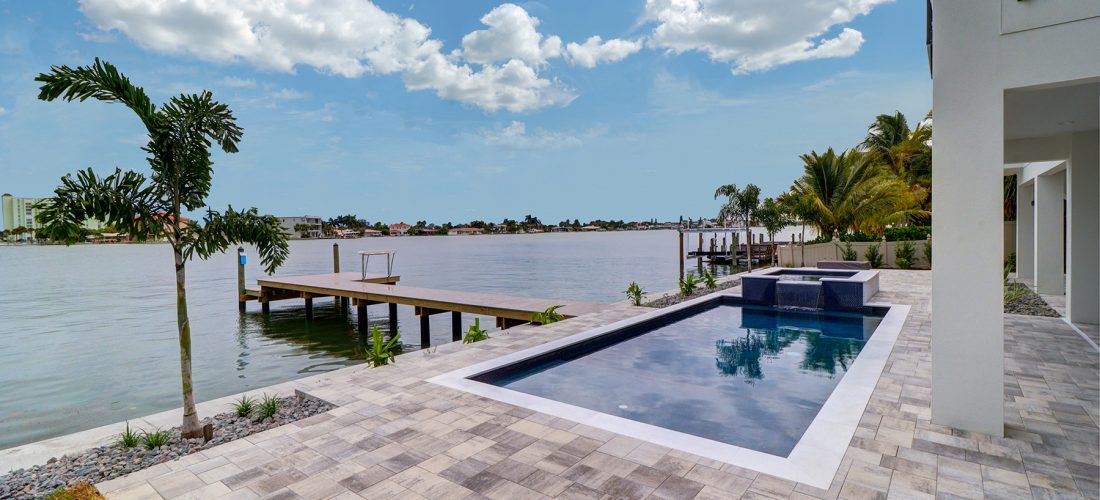Disclaimer: The information provided in this article is for general educational purposes only and does not constitute tax, legal, or financial advice. Laws and regulations can change, and the impact on your specific situation may vary. Before acting on any ideas discussed here, consult a qualified tax professional or financial advisor to evaluate your personal circumstances.
If your Pinellas County home was damaged in one of the recent hurricanes, you have a unique opportunity—and a narrow window—to rebuild without losing the property-tax advantages you’ve earned over years of ownership. Florida’s 110% rebuild rule lets qualifying homeowners replace storm-ruined living space without an immediate, full-value reassessment. Here’s exactly how it works, what you must do, and why timing and square-footage strategies matter.
1. The 110% Rebuild Rule: How It Works After a Hurricane
- Who Qualifies: Owners of a homestead-exempt property rendered uninhabitable by a “misfortune or calamity” such as a hurricane, fire, or flood.
- What It Permits: You may rebuild or replace up to 110% of your home’s pre-storm heated/cooled square footage (or up to 1,500 sq ft if your original home was smaller) without that portion being added at full market value. Those rebuilt square feet simply resume under your existing Save Our Homes cap.
- Critical Steps:
- Notify the Pinellas County Property Appraiser’s office of your intent to repair or rebuild.
- Begin construction within the statutory window—three years for homestead properties (and five years for non-homestead).
- Substantially complete the rebuild by the following January 1 assessment date.
- Notify the Pinellas County Property Appraiser’s office of your intent to repair or rebuild.
2. Voluntary Teardowns Versus Calamity Rebuilds
- Calamity-Driven: If your house was storm-destroyed, you tap into the 110% rule—replacing lost living area roughly “like for like” up to that threshold.
- Voluntary Demolition: Choosing to tear down your home by choice removes this protection. Any new construction—even if it matches or is smaller than the old footprint—is treated as brand-new and fully reassessed at market value on the next tax roll.
3. Preserving Your Homestead Exemption During Construction
- Keep Your Homestead Active: Before you start rebuilding, file a damage or rebuild notification so the appraiser continues to cap the land value until your new home is substantially complete.
- Rebuild Within 110%: Square footage rebuilt under that limit inherits your old assessed base and Save Our Homes cap.
- Excess Square Footage: Any built area over the 110% threshold is added at full market value—but future increases on your entire property remain capped at 3% (or CPI, whichever is lower).
4. Timing Your Rebuild for Maximum Benefit
- Assessment Date Matters: Florida uses January 1 as the valuation date.
- Complete Early in the Year: Wrapping up substantial construction in January or February gives you nearly a full year of occupancy before the new assessment drives up taxes.
- Balance Schedules: Permitting delays or weather can push you into the next calendar year; plan with your builder and surveyor to hit your target window.
5. Beyond Square Footage: Other Cost Considerations
- Impact & Permit Fees: While replacing a single-family home typically waives the multimodal impact fee, adding extra dwelling units or changing the use triggers new costs. Permit fees rise with construction value and area.
- Flood-Zone Elevation Rules: In designated flood zones, improvements totaling 50% or more of the building’s pre-improvement value can force a full elevation of the structure—often a much larger expense than property taxes.
- Stormwater & Utilities: Bigger roofs or driveways may bump you into higher stormwater-fee tiers and require upsized water meters, adding both capital and ongoing fees.
6. Smart Steps Before You Rebuild
- File Your Storm Damage Report
- Lock in your pre-storm assessed value by notifying the Property Appraiser immediately.
- Lock in your pre-storm assessed value by notifying the Property Appraiser immediately.
- Schedule an Informal Plan Review
- Bring your architect or builder to a free consultation at the appraiser’s office to estimate the tax impact of your design.
- Bring your architect or builder to a free consultation at the appraiser’s office to estimate the tax impact of your design.
- Phase Optional Features
- Delay non-essential add-ons—like expansive outdoor living areas or guest suites—to future years to spread out tax increases.
- Delay non-essential add-ons—like expansive outdoor living areas or guest suites—to future years to spread out tax increases.
- Use Portability (If Moving Homestead)
- Transfer up to $500,000 of your prior homestead’s Save Our Homes differential to your new build by filing Form DR-501T by March 1.
- Transfer up to $500,000 of your prior homestead’s Save Our Homes differential to your new build by filing Form DR-501T by March 1.
Key Takeaways for Hurricane-Damaged Homeowners
- Rebuild within 110% of your original heated/cooled area to preserve your Save Our Homes cap on that portion.
- Notify the Property Appraiser and rebuild on time or you’ll lose the calamity protection.
- Voluntary teardowns do not qualify—any new footprint is fully reassessed if the demolition wasn’t storm-driven.
- Maintain your homestead exemption throughout construction to cap future increases on your land.
Rebuilding after a hurricane is both a fresh start and a financial tightrope. By planning your footprint strategically, acting quickly with the Property Appraiser, and phasing optional features, you can preserve valuable tax savings while crafting the home of your dreams.
Ready to rebuild smarter after the storm? Contact LaBram Homes today for a free hurricane-rebuild consultation.



